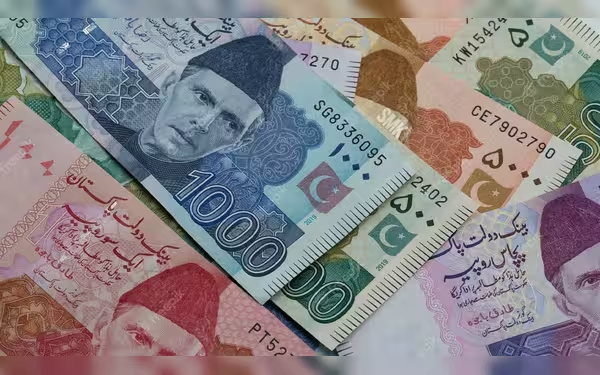Thursday, November 7, 2024 07:28 AM
Pakistan Money Supply Contracts Significantly, State Bank Reports
- Broad money supply decreases by Rs46.6 billion WoW.
- Currency in circulation rises by Rs212.71 billion.
- Economic implications raise concerns for future growth.
 Image Credits: thecurrentpk
Image Credits: thecurrentpkState Bank of Pakistan reports a Rs46.6 billion contraction in money supply, raising concerns about economic growth and inflation.
In recent developments concerning Pakistan's economy, the State Bank of Pakistan (SBP) has reported a significant contraction in the country's money supply. The most commonly referenced measure of money supply, known as broad money (M2), has seen a decrease of Rs46.6 billion week over week (WoW), bringing the total to Rs35.64 trillion as of September 6. This decline is not just a minor fluctuation; it marks a substantial drop of over Rs940 billion compared to June 2024, when M2 was recorded at Rs36.58 trillion at the end of the fiscal year 2024.
Understanding the implications of this contraction is crucial for both policymakers and the general public. A decrease in the money supply can indicate various economic conditions, including reduced consumer spending and investment. When people and businesses have less money circulating in the economy, it can lead to slower economic growth. This situation raises concerns about the overall health of the economy and the potential for increased inflation in the future.
Interestingly, while the broad money supply has decreased, the currency in circulation has actually increased. The SBP reported that the currency in circulation rose by Rs212.71 billion WoW, reaching Rs9.09 trillion. This suggests that while the overall money supply is contracting, people are still holding onto cash, possibly due to uncertainty in the economic environment.
As we analyze these figures, it is essential to consider the broader context. The contraction in M2 could be a response to various factors, including government policies, inflation rates, and global economic conditions. It is vital for the government and the SBP to monitor these trends closely and implement measures that can stimulate economic growth while ensuring financial stability.
The recent data from the State Bank of Pakistan highlights a critical moment for the country's economy. The decline in broad money supply, coupled with an increase in currency circulation, presents a complex picture that requires careful analysis and strategic planning. As citizens, staying informed about these economic indicators can help us understand the financial landscape and make better decisions for our future.













